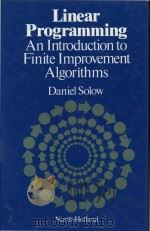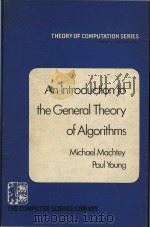《an introduction to bioinformatics algorithms P435》求取 ⇩
| 作者 | 编者 |
|---|---|
| 出版 | 未查询到或未知 |
| 参考页数 | ✅ 真实服务 非骗流量 ❤️ |
| 出版时间 | 没有确切时间的资料 目录预览 |
| ISBN号 | 无 — 违规投诉 / 求助条款 |
| PDF编号 | 820576778(学习资料 勿作它用) |
| 求助格式 | 扫描PDF(若分多册发行,每次仅能受理1册) |

1Introduction1
2Algorithms and Complexity7
2.1 What Is an Algorithm?7
2.2 Biological Algorithms versus Computer Algorithms14
2.3 The Change Problem17
2.4 Correct versus Incorrect Algorithms20
2.5 Recursive Algorithms24
2.6 Iterative versus Recursive Algorithms28
2.7 Fast versus Slow Algorithms33
2.8 Big-O Notation37
2.9Algorithm Design Techniques40
2.9.1 Exhaustive Search41
2.9.2 Branch-and-Bound Algorithms42
2.9.3 Greedy Algorithms43
2.9.4 Dynamic Programming43
2.9.5 Divide-and-Conquer Algorithms48
2.9.6 Machine Learning48
2.9.7 Randomized Algorithms48
2.10 Tractable versus Intractable Problems49
2.11Notes51
Biobox: Richard Karp52
2.12 Problems54
3Molecular Biology Primer57
3.1 What Is Life Made Of?57
3.2 What Is the Genetic Material?59
3.3 What Do Genes Do?60
3.4 What Molecule Codes for Genes?61
3.5 What Is the Structure of DNA?61
3.6 What Carries Information between DNA and Proteins?63
3.7 How Are Proteins Made?65
3.8How Can We Analyze DNA?67
3.8.1 Copying DNA67
3.8.2 Cutting and Pasting DNA71
3.8.3 Measuring DNA Length72
3.8.4 Probing DNA72
3.9 How Do Individuals of a Species Differ?73
3.10 How Do Different Species Differ?74
3.11Why Bioinformatics?75
Biobox: Russell Doolittle79
4Exhaustive Search83
4.1 Restriction Mapping83
4.2 Impractical Restriction Mapping Algorithms87
4.3 A Practical Restriction Mapping Algorithm89
4.4 Regulatory Motifs in DNA Sequences91
4.5 Profiles93
4.6 The Motif Finding Problem97
4.7 Search Trees100
4.8 Finding Motifs108
4.9 Finding a Median String111
4.10Notes114
Biobox: Gary Stormo116
4.11 Problems119
5Greedy Algorithms125
5.1 Genome Rearrangements125
5.2 Sorting by Reversals127
5.3 Approximation Algorithms131
5.4 Breakpoints: A Different Face of Greed132
5.5 A Greedy Approach to Motif Finding136
5.6Notes137
Biobox: David Sankoff139
5.7 Problems143
6Dynamic Programming Algorithms147
6.1 The Power of DNA Sequence Comparison147
6.2 The Change Problem Revisited148
6.3 The Manhattan Tourist Problem153
6.4 Edit Distance and Alignments167
6.5 Longest Common Subsequences172
6.6 Global Sequence Alignment177
6.7 Scoring Alignments178
6.8 Local Sequence Alignment180
6.9 Alignment with Gap Penalties184
6.10 Multiple Alignment185
6.11 Gene Prediction193
6.12 Statistical Approaches to Gene Prediction197
6.13 Similarity-Based Approaches to Gene Prediction200
6.14 Spliced Alignment203
6.15 Notes207
Biobox: Michael Waterman209
6.16Problems211
7Divide-and-Conquer Algorithms227
7.1 Divide-and-Conquer Approach to Sorting227
7.2 Space-Efficient Sequence Alignment230
7.3 Block Alignment and the Four-Russians Speedup234
7.4 Constructing Alignments in Subquadratic Time238
7.5Notes240
Biobox: Webb Miller241
7.6 Problems244
8Graph Algorithms247
8.1 Graphs247
8.2 Graphs and Genetics260
8.3 DNA Sequencing262
8.4 Shortest Superstring Problem264
8.5 DNA Arrays as an Alternative Sequencing Technique265
8.6 Sequencing by Hybridization268
8.7 SBH as a Hamiltonian Path Problem271
8.8 SBH as an Eulerian Path Problem272
8.9 Fragment Assembly in DNA Sequencing275
8.10 Protein Sequencing and Identification280
8.11 The Peptide Sequencing Problem284
8.12 Spectrum Graphs287
8.13 Protein Identification via Database Search290
8.14 Spectral Convolution292
8.15 Spectral Alignment293
8.16 Notes299
8.17 Problems302
9Combinatorial Pattern Matching311
9.1 Repeat Finding311
9.2 Hash Tables313
9.3 Exact Pattern Matching316
9.4 Keyword Trees318
9.5 Suffix Trees320
9.6 Heuristic Similarity Search Algorithms324
9.7 Approximate Pattern Matching326
9.8 BLAST: Comparing a Sequence against a Database330
9.9Notes331
Biobox: Gene Myers333
9.10 Problems337
10 Clustering and Trees339
10.1Gene Expression Analysis339
10.2 Hierarchical Clustering343
10.3 k-Means Clustering346
10.4 Clustering and Corrupted Cliques348
10.5 Evolutionary Trees354
10.6 Distance-Based Tree Reconstruction358
10.7 Reconstructing Trees from Additive Matrices361
10.8 Evolutionary Trees and Hierarchical Clustering366
10.9 Character-Based Tree Reconstruction368
10.10 Small Parsimony Problem370
10.11 Large Parsimony Problem374
10.12 Notes379
Biobox: Ron Shamir380
10.13 Problems384
11 Hidden Markov Models387
11.1CC-Islands and the “Fair Bet Casino”387
11.2 The Fair Bet Casino and Hidden Markov Models390
11.3 Decoding Algorithm393
11.4 HMM Parameter Estimation397
11.5 Profile HMM Alignment398
11.6Notes400
Biobox: David Haussler403
11.7 Problems407
12 Randomized Algorithms409
12.1The Sorting Problem Revisited409
12.2 Gibbs Sampling412
12.3 Random Projections414
12.4 Notes416
12.5 Problems417
Using Bioinformatics Tools419
Bibliography421
Index428
《an introduction to bioinformatics algorithms P435》由于是年代较久的资料都绝版了,几乎不可能购买到实物。如果大家为了学习确实需要,可向博主求助其电子版PDF文件。对合法合规的求助,我会当即受理并将下载地址发送给你。
高度相关资料
-

- An Introduction To Japan
- 1957 Columbia University Press
-

- ENCOUNTER
- MACMILLAN
-

- AN INTRODUCTION TO SOCIOLINGUISTICS
- 1992 LONGMAN
-

- AN INTRODUCTION TO SOCIOLINGUISTICS
- 1986 BASIL BLACKWELL INC.
-

- AN INTRODUCTION TO PSYCHOLGY
- 1920 HENRY HOLT AND COMPANY
-

- AN INTRODUCTION TO LINGUISTICS
- 1999年 ST.MARTIN'S PRESS
-

- Linear programming : an introduction to finite improvement algorithms
- 1984 North-Holland
-

- AN INTRODUCTION TO CARDIOLOGY
- 1949 EDWARD ARNOLD & CO
-

- AN INTRODUCTION TO HINDUISM
- 1996 CAMBRIDGE
-

- An Introduction to Sociology
- 1942 THOMAS Y. CROWELL COMPANY
-

- An introduction to the general theory of algorithms
- 1978 NorthHolland
-

- INTRODUCTION TO COMPUTING AND ALGORITHMS
- 1998 ADDISON-WESLEY
提示:百度云已更名为百度网盘(百度盘),天翼云盘、微盘下载地址……暂未提供。➥ PDF文字可复制化或转WORD


